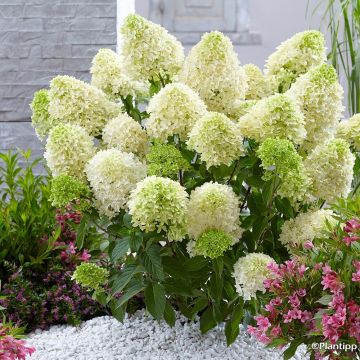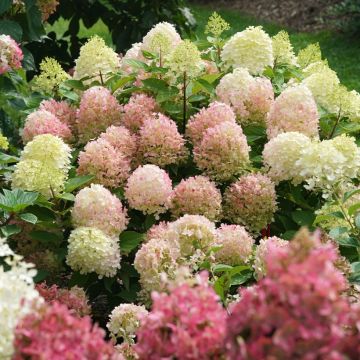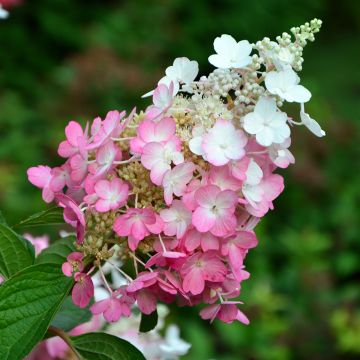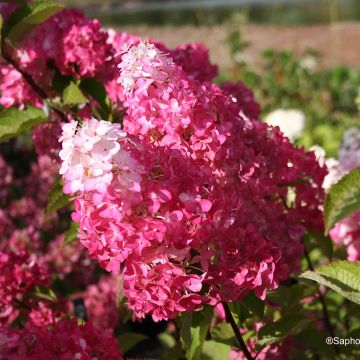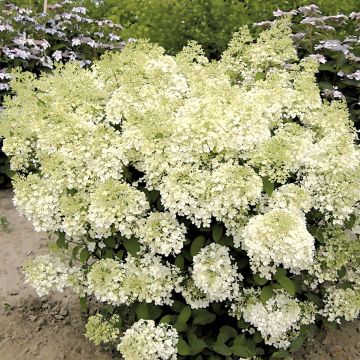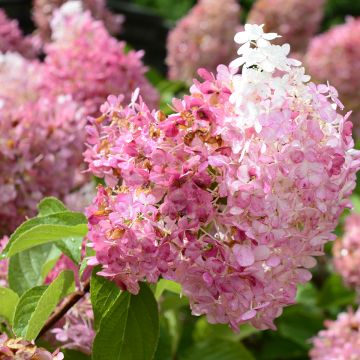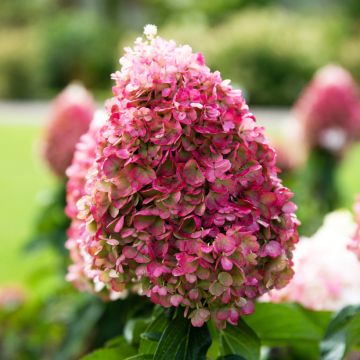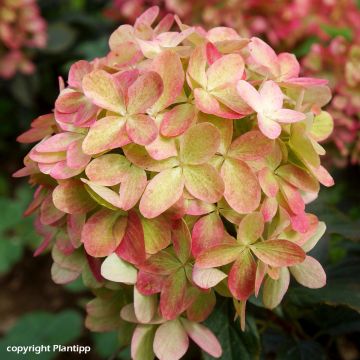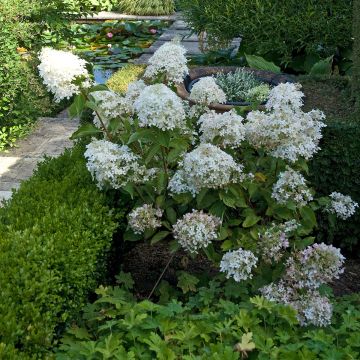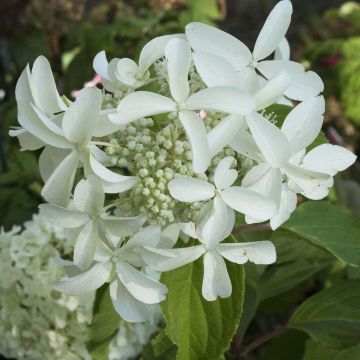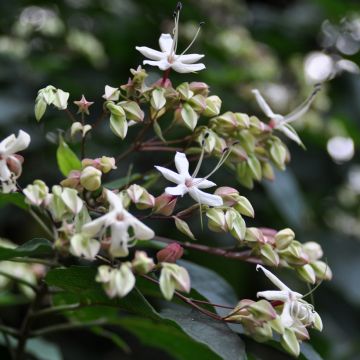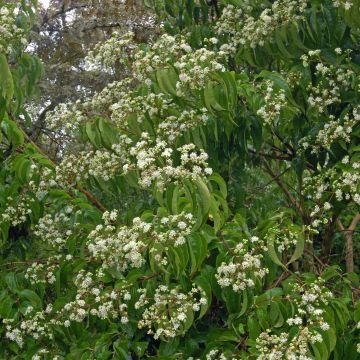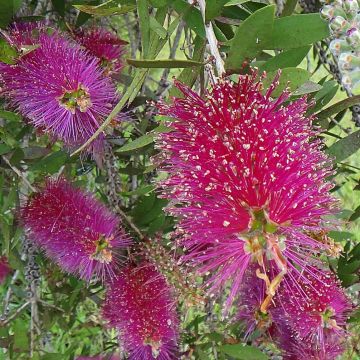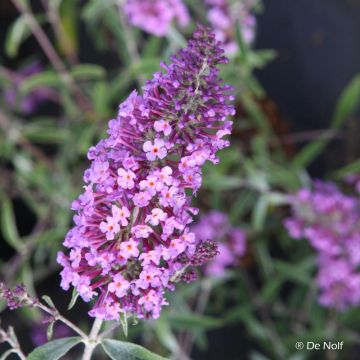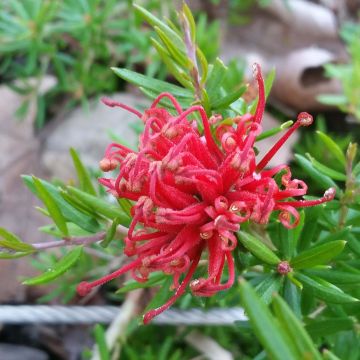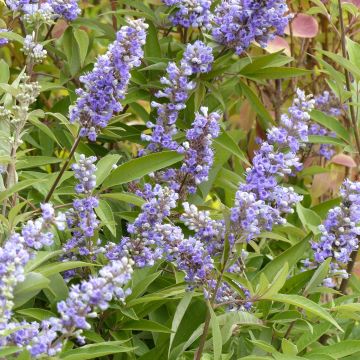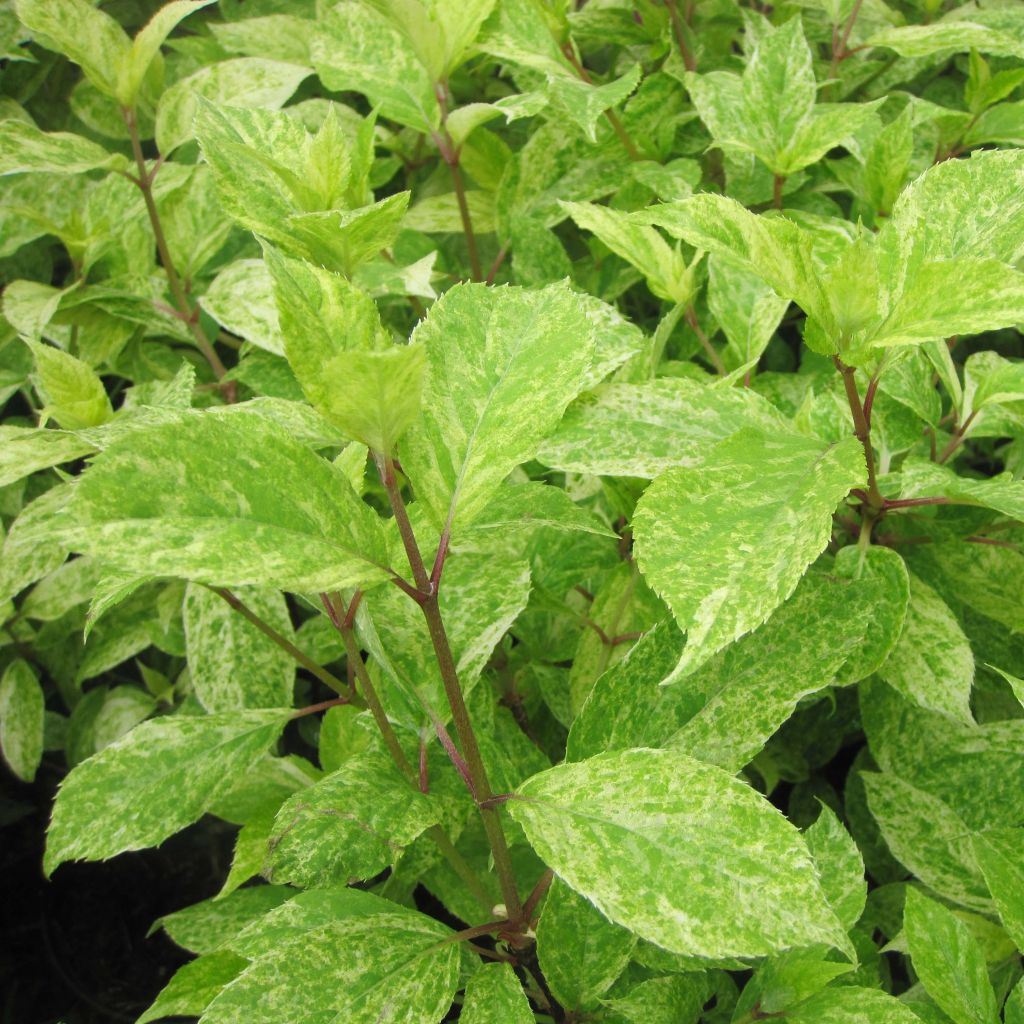

Hydrangea paniculata Shikoku Flash
Hydrangea paniculata Shikoku Flash
Hydrangea paniculata Shikoku Flash
Paniculate Hydrangea, Panicled Hydrangea, Panicle Hydrangea
Special offer!
Receive a €20 voucher for any order over €90 (excluding delivery costs, credit notes, and plastic-free options)!
1- Add your favorite plants to your cart.
2- Once you have reached €90, confirm your order (you can even choose the delivery date!).
3- As soon as your order is shipped, you will receive an email containing your voucher code, valid for 3 months (90 days).
Your voucher is unique and can only be used once, for any order with a minimum value of €20, excluding delivery costs.
Can be combined with other current offers, non-divisible and non-refundable.
Home or relay delivery (depending on size and destination)
Schedule delivery date,
and select date in basket
This plant carries a 24 months recovery warranty
More information
We guarantee the quality of our plants for a full growing cycle, and will replace at our expense any plant that fails to recover under normal climatic and planting conditions.
Would this plant suit my garden?
Set up your Plantfit profile →
Description
Somewhat unusually, perhaps, Hydrangea paniculata Shikoku Flash is a marvellous and very different variety of paniculate hydrangea that is more noticeable for the beauty of its foliage than for its flowering! With its lovely leaves generously splashed and sprayed with cream turning to grey-white, it catches the eye from April and puts on its show until autumn, particularly in semi-shaded areas of the garden. Its light summer flowering, in the form of small white panicles, highlights the delicacy of this remarkable plant. Choose its location carefully, in filtered light, and provide deep and fresh soil at its base without too much limestone.
Hydrangea paniculata, belonging to the Hydrangeaceae family and originating from deciduous forests in its natural habitat, is native to Korea, southeast China, Japan and Russia (Sakhalin and Kuril Islands). This Shikoku Flash variety brings a breath of fresh air to this genus which has been available in many cultivars since the introduction of this species in the West. With quite rapid growth, albeit a little slower than the type species, this Hydrangea forms a beautiful bush with brown stems, measuring about 1.8 m (5 ft 11 in) in all directions. Its habit is bushy, upright and ample, and its deciduous, dense foliage appears late in the spring, around April. It is composed of ovate and pointed leaves, measuring 7 to 15 cm (2.8 to 5.9 in) long. Green when budding, they are quickly invaded by splashes and a dusting of white, shifting from cream-white to very light grey. They take on beautiful golden-yellow colours in autumn, if the cold does not set in too quickly. Around July-August appear some small, somewhat loose conical panicles, composed of larger sterile flowers and downy fertile ones, first greenish-white, then cream-white, gradually turning to old pink at the end of the season. The flowers persist on the shrub all winter, pleasantly decorating the garden in the dormant season, especially when they are adorned with frost.
This paniculate hydrangea is intended for gardens rather than pot cultivation, and preferably away from the burning sun of the afternoon which could damage its very beautiful foliage. Very accommodating, easy to live with and boasting excellent hardiness, it will flourish in ordinary but deep soil, and even poor or stony soil that is well drained but not too dry. It can be included in a free hedge, integrated into a bed of trees and shrubs adorned with perennial plants, but it is on its own that it will display all its splendour. The choices are varied, and it will blend perfectly with dark evergreen shrubs, shrubs with coloured stems like those of certain dogwoods, or shrubs with summer or late flowering. This bushy hydrangea animates the garden from spring until late in the season! It is not necessary to cut off the faded flowers, as they remain decorative for a long time in winter and protect the stems in case of severe frost.
Report an error about the product description
Hydrangea paniculata Shikoku Flash in pictures


Plant habit
Flowering
Foliage
Botanical data
Hydrangea
paniculata
Shikoku Flash
Hydrangeaceae
Paniculate Hydrangea, Panicled Hydrangea, Panicle Hydrangea
Cultivar or hybrid
Other Hydrangea Paniculata
View all →Planting and care
Hydrangea paniculata Shikoku Flash is a very easy-to-grow shrub, requiring little care and maintenance. It enjoys gently sunny positions and fears the sun at the hottest hours of the day. With unbeatable hardiness, it can withstand harsh climates as it can tolerate temperatures down to a minimum of -15 °C (5 °F). Not demanding about the nature of the soil, it does however require a deep, well-drained, acidic to neutral soil, but tolerates the presence of limestone in small quantities in the soil. It copes just as well with a rich, humus-rich and acidic soil as with an ordinary, poor or stony soil, provided that the soil is amended with a good leaf compost every spring. It will be less happy in heavy soil, so if this is the case it will be necessary to lighten the soil by incorporating sand and turf to improve drainage. When planting, which can be done in spring or autumn, work the soil deeply and add a good base fertiliser such as dried blood or crushed horn. Plan a location where its span can develop. Leave a free space of 1 m (3 ft 4 in) to 1.5 (4 ft 11 in) around it. It appreciates fresh soils, but tolerates a passing drought quite well. In the first year, carry out regular and generous watering, especially in hot regions. Furthermore, it is advisable to water frequently during flowering, without wetting the leaves or flowers.
Planting period
Intended location
Care
This item has not been reviewed yet - be the first to leave a review about it.
Similar products
Haven't found what you were looking for?
Hardiness is the lowest winter temperature a plant can endure without suffering serious damage or even dying. However, hardiness is affected by location (a sheltered area, such as a patio), protection (winter cover) and soil type (hardiness is improved by well-drained soil).

Photo Sharing Terms & Conditions
In order to encourage gardeners to interact and share their experiences, Promesse de fleurs offers various media enabling content to be uploaded onto its Site - in particular via the ‘Photo sharing’ module.
The User agrees to refrain from:
- Posting any content that is illegal, prejudicial, insulting, racist, inciteful to hatred, revisionist, contrary to public decency, that infringes on privacy or on the privacy rights of third parties, in particular the publicity rights of persons and goods, intellectual property rights, or the right to privacy.
- Submitting content on behalf of a third party;
- Impersonate the identity of a third party and/or publish any personal information about a third party;
In general, the User undertakes to refrain from any unethical behaviour.
All Content (in particular text, comments, files, images, photos, videos, creative works, etc.), which may be subject to property or intellectual property rights, image or other private rights, shall remain the property of the User, subject to the limited rights granted by the terms of the licence granted by Promesse de fleurs as stated below. Users are at liberty to publish or not to publish such Content on the Site, notably via the ‘Photo Sharing’ facility, and accept that this Content shall be made public and freely accessible, notably on the Internet.
Users further acknowledge, undertake to have ,and guarantee that they hold all necessary rights and permissions to publish such material on the Site, in particular with regard to the legislation in force pertaining to any privacy, property, intellectual property, image, or contractual rights, or rights of any other nature. By publishing such Content on the Site, Users acknowledge accepting full liability as publishers of the Content within the meaning of the law, and grant Promesse de fleurs, free of charge, an inclusive, worldwide licence for the said Content for the entire duration of its publication, including all reproduction, representation, up/downloading, displaying, performing, transmission, and storage rights.
Users also grant permission for their name to be linked to the Content and accept that this link may not always be made available.
By engaging in posting material, Users consent to their Content becoming automatically accessible on the Internet, in particular on other sites and/or blogs and/or web pages of the Promesse de fleurs site, including in particular social pages and the Promesse de fleurs catalogue.
Users may secure the removal of entrusted content free of charge by issuing a simple request via our contact form.
The flowering period indicated on our website applies to countries and regions located in USDA zone 8 (France, the United Kingdom, Ireland, the Netherlands, etc.)
It will vary according to where you live:
- In zones 9 to 10 (Italy, Spain, Greece, etc.), flowering will occur about 2 to 4 weeks earlier.
- In zones 6 to 7 (Germany, Poland, Slovenia, and lower mountainous regions), flowering will be delayed by 2 to 3 weeks.
- In zone 5 (Central Europe, Scandinavia), blooming will be delayed by 3 to 5 weeks.
In temperate climates, pruning of spring-flowering shrubs (forsythia, spireas, etc.) should be done just after flowering.
Pruning of summer-flowering shrubs (Indian Lilac, Perovskia, etc.) can be done in winter or spring.
In cold regions as well as with frost-sensitive plants, avoid pruning too early when severe frosts may still occur.
The planting period indicated on our website applies to countries and regions located in USDA zone 8 (France, United Kingdom, Ireland, Netherlands).
It will vary according to where you live:
- In Mediterranean zones (Marseille, Madrid, Milan, etc.), autumn and winter are the best planting periods.
- In continental zones (Strasbourg, Munich, Vienna, etc.), delay planting by 2 to 3 weeks in spring and bring it forward by 2 to 4 weeks in autumn.
- In mountainous regions (the Alps, Pyrenees, Carpathians, etc.), it is best to plant in late spring (May-June) or late summer (August-September).
The harvesting period indicated on our website applies to countries and regions in USDA zone 8 (France, England, Ireland, the Netherlands).
In colder areas (Scandinavia, Poland, Austria...) fruit and vegetable harvests are likely to be delayed by 3-4 weeks.
In warmer areas (Italy, Spain, Greece, etc.), harvesting will probably take place earlier, depending on weather conditions.
The sowing periods indicated on our website apply to countries and regions within USDA Zone 8 (France, UK, Ireland, Netherlands).
In colder areas (Scandinavia, Poland, Austria...), delay any outdoor sowing by 3-4 weeks, or sow under glass.
In warmer climes (Italy, Spain, Greece, etc.), bring outdoor sowing forward by a few weeks.






























